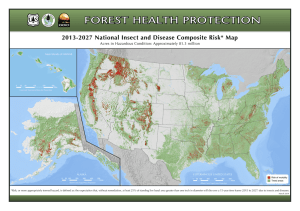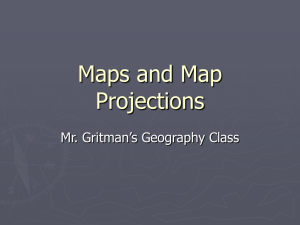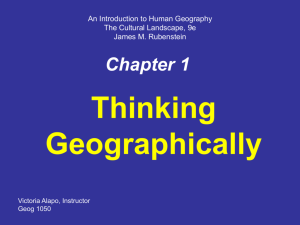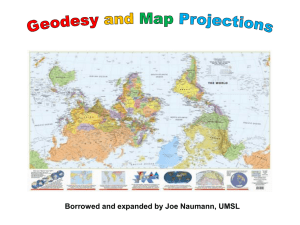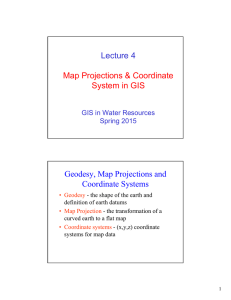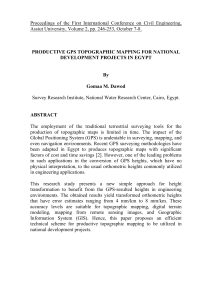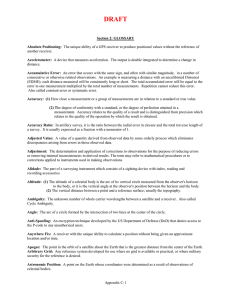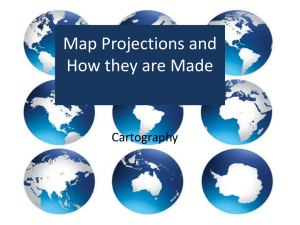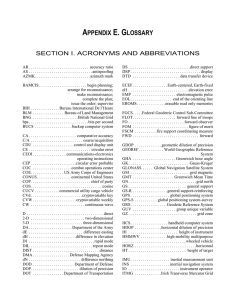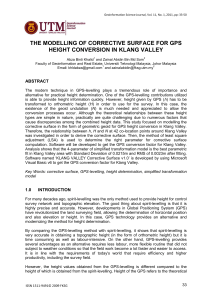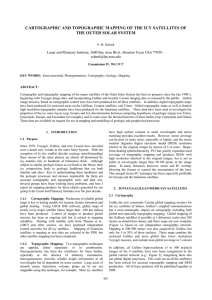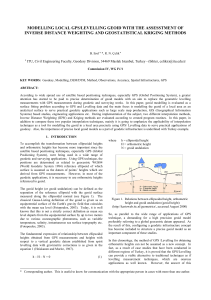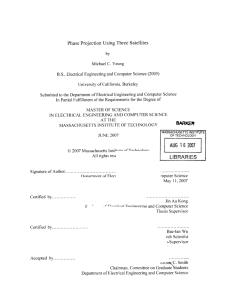3 - Cal State LA - Instructional Web Server
advertisement
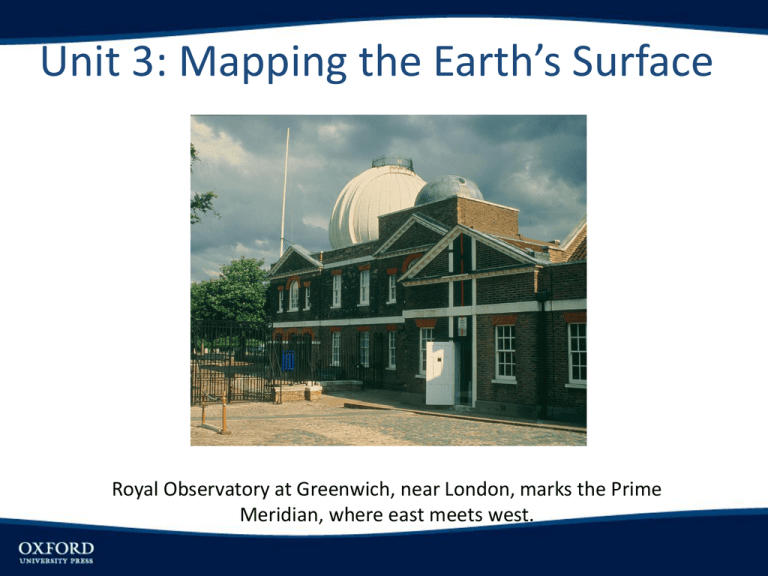
Unit 3: Mapping the Earth’s Surface Royal Observatory at Greenwich, near London, marks the Prime Meridian, where east meets west. OBJECTIVES • Introduce reference systems used for locations on the Earth’s surface • Describe the most important characteristics of maps and the features of common classes of map projections • Interpret isoline maps. • Discuss contemporary developments in geographic information science Locations on Earth • Latitude-parallels • Longitude-meridians • Prime Meridian • Great Circles Latitude and Longitude Global Positioning System (GPS) Provides location (lat, long) and elevation using orbiting satellites based on a corrected geoid (the reference ellipsoid of the Earth). The correction is made due to gravity variations as shown on the maps below. Source: http://en.wikipedia.org/wiki/Geoid GPS monitor on a tripod can be used to measure small movements of the Earth from earthquakes, plate tectonics. Source: http://celebrating200years.noaa.gov/transformations/ht_mod/image6.html In a remote area, the GPS provides accurate location and elevation from 3 satellites. Map Projections • Cylindrical (A) • Mercator (A) • Conic (B) • Planar • Equal-area The Mercator Projection -Distortion greatest near the poles -Provides true and constant compass bearing-rhumb lines Planar gnomic projection: meridians converge at poles and straight lines follow great-circles Equal-area projection preserves relative sizes of continents; Interrupted form-not continuous, thus minimizes distortions The Robinson map projection • Compromise between area and shape distortion • Shows whole globe; stretches poles into lines Source: http://gothos.info/wp-content/uploads/2011/04/robinson.png Isarithmic (isoline) map showing contours of equal values (rainfall) • Like topographic (height) charts, reduces 3-D volumetric data onto 2-D map. Topographic contour maps showing horizontal map of isolines (A) and vertical cross-section of traverse line XY (B). Perspective sketch of coastal landscape (A) and corresponding topographic map (B). Geographic Information System (GIS) • Computer-generated overlays • Query capabilitiescan ask questions of data (ie, where will I find the combined features A-I-1?) Remote Sensing • Satellite based • Aircraft based • Ground based (radar, infrared) Landsat image of the Los Angeles area showing vegetation (red), urban areas (blue-gray) and water (black). Vegetation mostly associated with higher terrain, notably the San Gabriel Mountains to the north of the city and the Santa Monica Mountains to the west. Remote sensing of the environment Active systems Passive systems Electromagnetic spectrum (wavelengths of energy) Earth orbiting satellites gather data used in: weather, climate, atmospheric pollution geology, hydrology, soil science and agriculture, biology, oceanography
